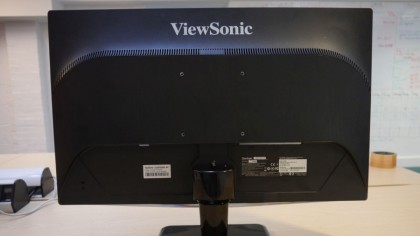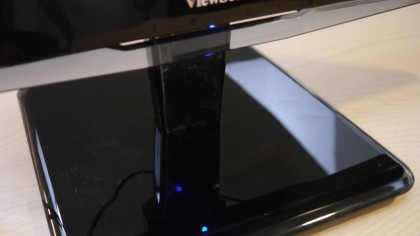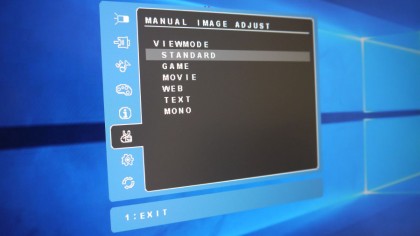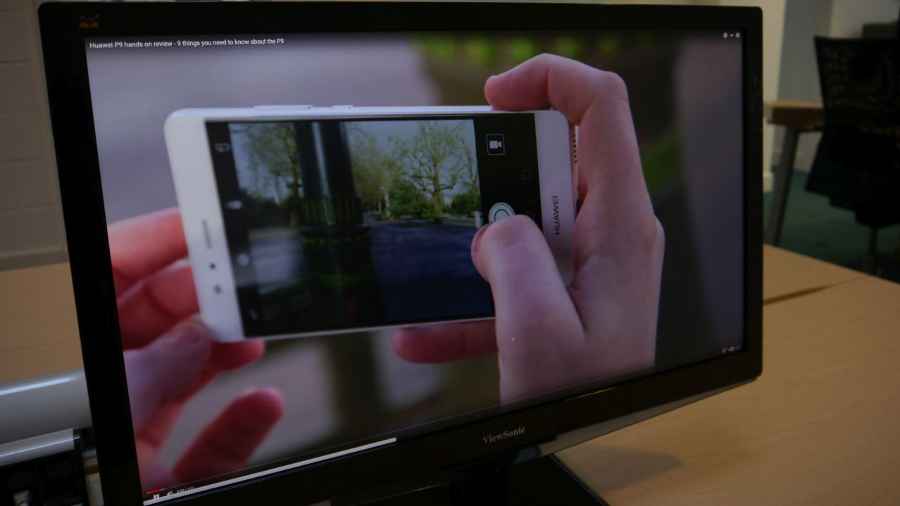Early Verdict
This PLS monitor produces an impressive image quality, but we found the screen size too small for the Windows 10 desktop at 4K resolution.
Pros
- +
Sharp picture
- +
Great colours and contrast
- +
HDMI 2.0 and DisplayPort 1.2 on board
Cons
- -
Not really enough screen real-estate for 4K
- -
Doesn't swivel or rotate
- -
No USB or legacy ports
Why you can trust TechRadar
While some laptops are still sporting 1366 x 768 (WXGA) screens, the world of desktop computing has rapidly moved on beyond full HD (1920 x 1080) to embrace a number of resolutions. However, one res in particular is likely to dominate in the very near future as TV and computing needs converge.
4K or Ultra HD (UHD), in our context, refers to a monitor that can display 3840 x 2160 pixels, more than eight million dots, a fourfold improvement on what full HD can achieve and nine times what HD reached.
The last two years have seen prices tumble as 4K television sets flood the market. While you can find one in the UK for well under £200, your options for monitors are far more restricted especially at the lower-end.

This is where ViewSonic wants to position its VX2475Smhl-4K monitor (also known as the VX75SMHL-4K). Our hands-on today will look at business or office usage bearing in mind that this is an entry-level, low-cost monitor.

We use a 28-inch 4K monitor on a daily basis and have always been curious to find out what it would feel like moving to an even smaller 4K display. The viewable diagonal of this monitor is actually 23.6-inches, which translates into four 11.8-inch panels joined in a 2 x 2 matrix, and a 187ppi density, one of the highest we've ever seen on any non-Apple monitor.
At £329.98 (Dabs) – around $470, or AU$610 – coming with a two-year warranty from ViewSonic, this monitor is considerably more expensive than some of its competitors like the Acer CB241HQK (£261.08 at OfficeMagic) or the AOC U2477 (£294.99 at Ebuyer), but has a couple of interesting features – at that price – that make it stand out.

The VX2475Smhl-4K itself adopts a conservative design, with matte black bezels that are around 22mm thick surrounding the panel. It is attached to a pole that sits on a square base with a glass top, allowing for a tilt of 22 degrees backwards and five degrees forwards. It doesn't swivel or rotate.
The display uses PLS (Plane to Line Switching) technology, an alternative to In-Plane Switching (IPS), which delivers improved colour quality and viewing angles compared to cheaper Twisted Nematic (TN) models. ViewSonic calls its version SuperClear.

This monitor offers both HDMI 2.0 and DisplayPort 1.2 which allows it to hit 4K at 60Hz via two separate inputs, useful if you're switching frequently between two separate devices. Another HDMI port is also MHL 2.0 compliant allowing MHL-enabled devices to be charged via that connector. Sadly, it doesn't support picture-in-picture (PiP).
Note that it lacks any USB connectors which is a bit of a let-down but then again this is a monitor not a computer. Also further note the complete lack of so-called legacy video connectors: there's no VGA/D-Sub or DVI.
This monitor's feature set is completed by two rear 3W speakers, an audio out port and a 100mm VESA mount. It comes with an external adaptor – although we'd have preferred to have an integrated one to make the whole setup tidier.

The display has 100% sRGB coverage, a quoted 178 degrees viewing angle, brightness of 300 cd/m2, a 1000:1 contrast ratio and a 2ms response time, plus the ability to display 24-bit colour.
It offers six preset ViewModes (Standard, Game, Movie, Web, Text, and Mono image modes) as well as five colour temperature settings (sRGB, Bluish, Cool, Native, and Warm), a Low Blue Filter setting and three ECO modes (Standard, Optimise, and Conserve) that can slash the power consumption of the VX2475Smhl-4K down to 20W. Not surprisingly, this is achieved mostly by dimming the monitor.
In use as an office monitor, one thing becomes clear very quickly. To make the best out of this display, you will need to be seated near. Very near. Otherwise, prepare yourself to squint a lot to see what's on your screen.

The monitor comes to life when displaying colours, and we found them to be rich and well-defined, boasting solid blacks and very good contrast levels.
There are plenty of controls available via the rudimentary OSD, allowing you to tinker with the gamma curve, colour temperature, contrast and brightness to strike the right balance. Four physical buttons are located below the bottom bezel, allowing you to navigate in a convoluted way around the various options.

A distracting blue status LED is a constant reminder that the monitor is powered on and the transparent plastic lip that protrudes at the bottom of the panel is a bit superfluous and gets in the way when you try to access the control buttons.
Early verdict
4K on a sub-24-inch monitor is far too small for us sadly as we use Windows 10 without scaling at 4K (or FHD on our laptop). The sweet spot remains 28-inch or above (if your desk space allows that). There's nothing fundamentally wrong with this monitor although ViewSonic could have added swivel and rotate options to the stand. There are plenty of other options available at a similar price, and more often than not, they're cheaper than the VX2475Smhl-4K.
And things become even more muddled when you start to include medium-sized television sets that are equipped with an HDMI 2.0 port. These, which usually have a starting diagonal size of 39-inches, cost as little as £270 (around $395, or AU$500).
- Check out the 10 best monitors and displays on the market right now

Désiré has been musing and writing about technology during a career spanning four decades. He dabbled in website builders and web hosting when DHTML and frames were in vogue and started narrating about the impact of technology on society just before the start of the Y2K hysteria at the turn of the last millennium.
What is a hands on review?
Hands on reviews' are a journalist's first impressions of a piece of kit based on spending some time with it. It may be just a few moments, or a few hours. The important thing is we have been able to play with it ourselves and can give you some sense of what it's like to use, even if it's only an embryonic view. For more information, see TechRadar's Reviews Guarantee.
